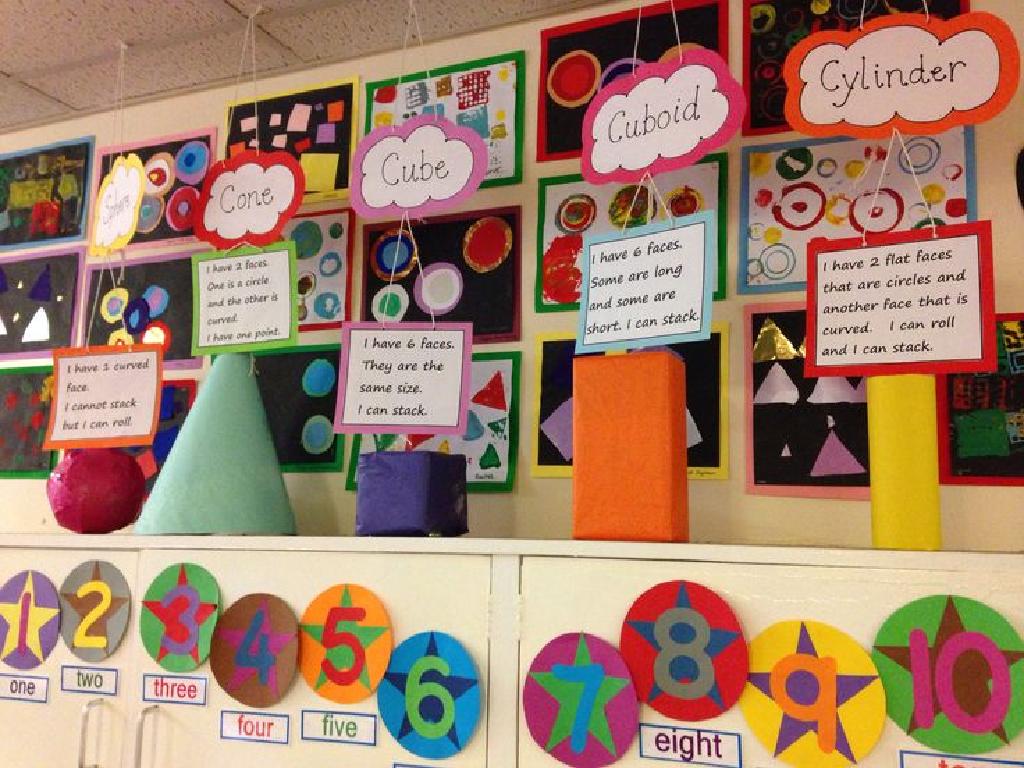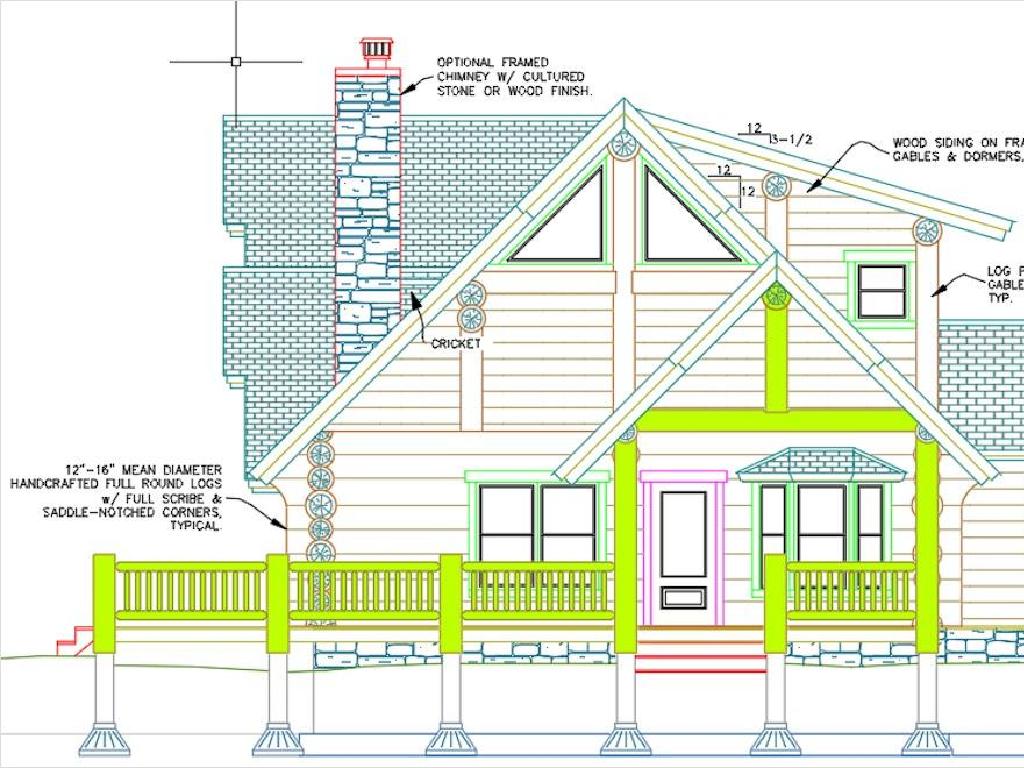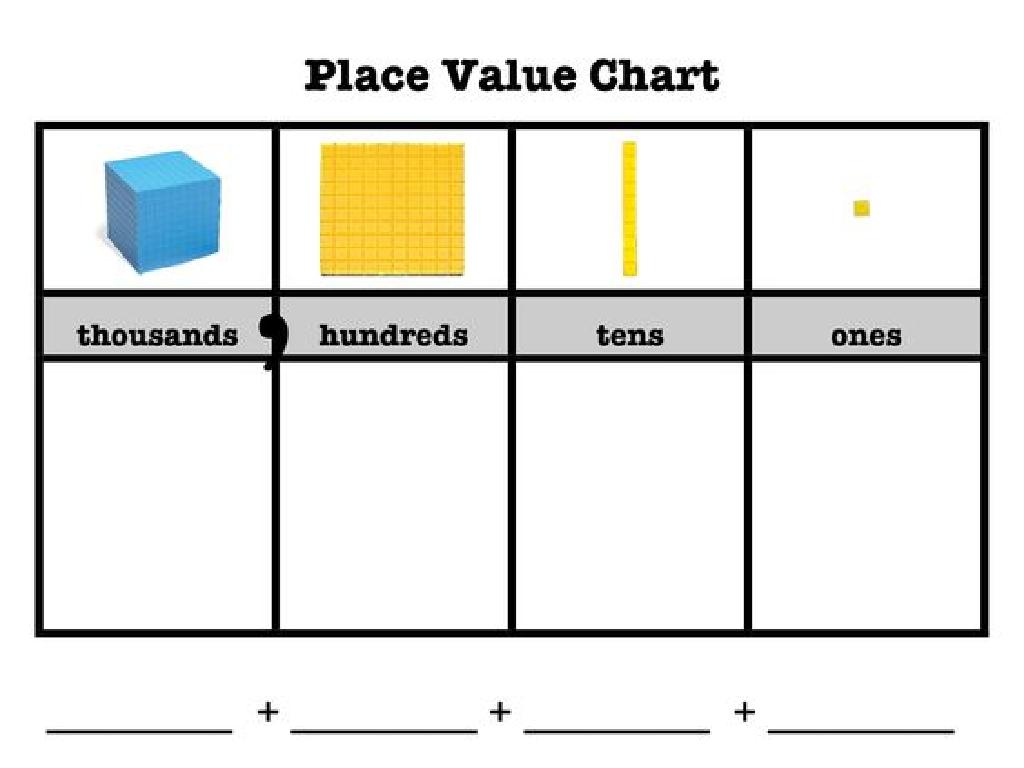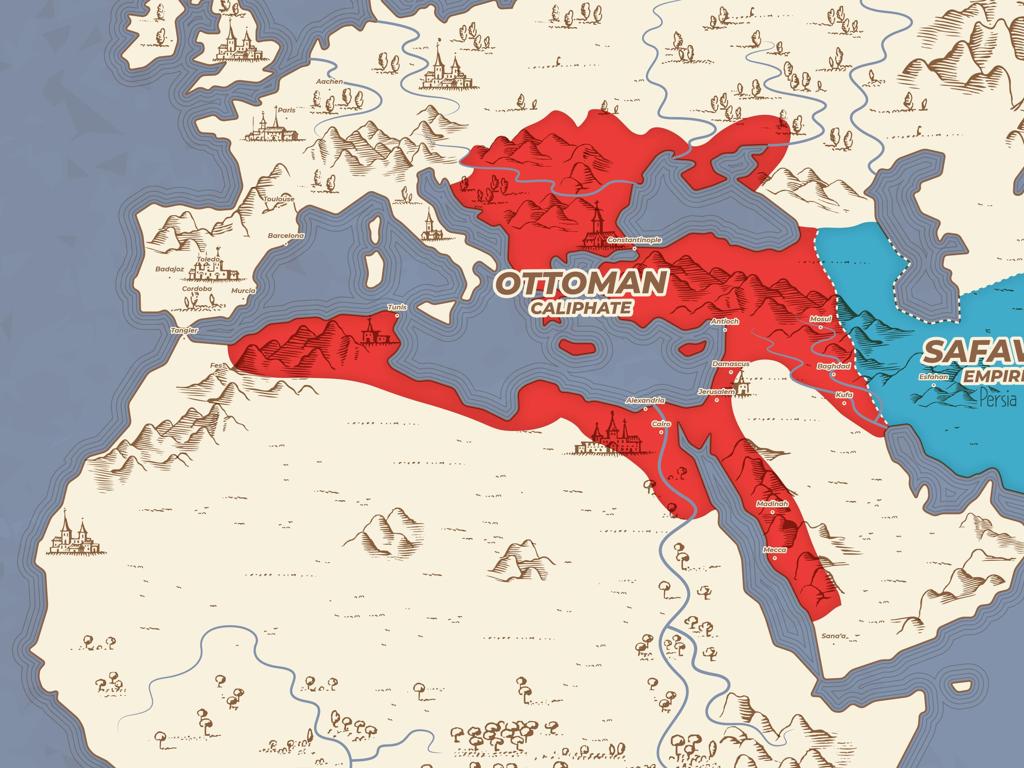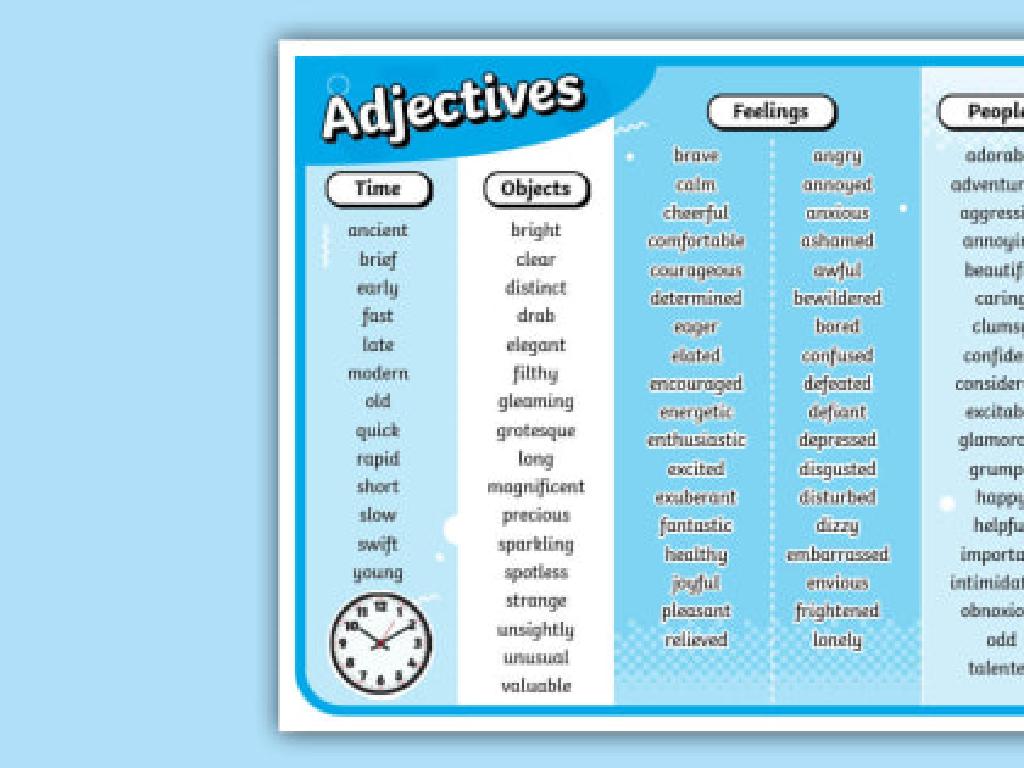Curved Parts
Subject: Math
Grade: Kindergarten
Topic: Two-Dimensional Shape Attributes
Please LOG IN to download the presentation. Access is available to registered users only.
View More Content
Welcome to Shapes: Curved Parts
– Good morning, little learners!
– Today’s focus: Curved shapes
– Think of shapes like circles and ovals
– Shapes with curves are fun
– Like a ball or an egg, they have no corners
– Can you name a curved shape?
|
Begin the class with a warm and engaging greeting. Introduce the concept of shapes with a focus on those that have curved parts, such as circles and ovals. Encourage the children to think about objects they are familiar with that have curves, like balls or eggs. This will help them relate to the concept more easily. Ask the students if they can name any shapes with curved parts to stimulate their thinking and participation. Be prepared to show examples of curved shapes and guide them to understand that these shapes do not have corners.
Curvy Shapes Around Us
– Shapes are everywhere
– Shapes: straight lines or curves
– Like squares (straight) vs. circles (curved)
– Curved shapes are smooth
– They feel like a round edge, no sharp points
– Examples: circle, oval
– A ball is a circle, an egg is like an oval
|
This slide introduces young learners to the concept of shapes, focusing on the attribute of curved edges. Start by pointing out various shapes in the classroom to show that shapes are a part of our everyday environment. Explain that shapes can have straight lines like a square or rectangle, or they can have curves like a circle or oval. Use tactile examples if possible, such as a ball to represent a circle and an egg to represent an oval, so students can feel the smoothness of curved shapes. Encourage the students to think of and share examples of curved shapes they encounter in their daily lives.
Meet Mr. Circle: All About Circles
– A circle is a round shape
– It has one curved line
– Just one edge that bends without any end
– Circles have no corners
– Unlike a square, circles are smooth all around
– Let’s draw circles in the air!
– Use your finger to make a circle in the air
|
Introduce the concept of a circle to the students by personifying the shape as ‘Mr. Circle.’ Explain that a circle is a special type of shape that is round and has one continuous curved line. Emphasize that unlike squares or triangles, circles do not have corners. Encourage the children to understand this concept by having them draw circles in the air with their fingers. This kinesthetic activity will help them remember the shape and its properties. You can also bring in objects that are circular, like a clock or a plate, to show real-life examples of circles.
Curvy Shapes: Meet the Oval
– An oval is a stretched circle
– It has one long curve
– Like the edge of a spoon or a balloon
– No corners on an oval
– Let’s trace ovals together!
– Use your finger to follow the oval on your worksheet
|
This slide introduces the concept of curved shapes, focusing on the oval. Explain to the students that an oval is similar to a circle but stretched out. Highlight that unlike shapes with straight edges, an oval has a continuous curve with no corners, making it smooth all around. Encourage the children to visualize objects they are familiar with, such as spoons or balloons, to relate to the shape of an oval. During the activity, have them trace ovals on their worksheets with their fingers to reinforce the shape’s attributes and help develop their motor skills. This tactile activity will aid in their understanding and recall of the shape.
Exploring Shapes: The Crescent Moon
– Crescent shape resembles a moon
– One big curve and one small curve
– Find crescent shapes around us
– Look for objects with a similar curved shape
– Classroom crescent hunt
– Can you spot any crescent shapes in our room?
|
This slide introduces the concept of the crescent shape, which is part of learning about curves in two-dimensional shapes. Start by showing a picture of a crescent moon and explaining that it’s like a curved ‘C’. Highlight the difference between the big and small curves of the crescent. Then, engage the students in a fun activity by asking them to look around the classroom for objects that have a crescent shape. This could be a smile in a picture, the curve of a banana, or the edge of a paper plate. Encourage the children to use their observation skills and reinforce the concept by discussing the shapes they find. This activity helps to solidify their understanding of curved shapes in a practical and interactive way.
Curves in Nature
– Curved shapes are everywhere
– Find curves in fruits like bananas
– Bananas are curved like a crescent
– Apples and hills have curves too
– Apples are round, hills are like half-circles
– Let’s match curved objects and shapes
– We’ll use pictures to learn about curves
|
This slide introduces the concept of curves in everyday objects, specifically those found in nature, to Kindergarten students. Start by explaining that shapes are not just in books or toys but also in the world around us. Use tangible examples like bananas, apples, and hills to illustrate curved shapes. For the activity, provide various pictures of curved objects and simple curved shapes (like circles, ovals, and crescents) and ask the students to match them. This interactive activity will help students recognize and understand curves in two-dimensional shapes. Encourage the children to discuss the shapes they see and to find other examples of curves in the classroom or at home.
Shape Hunt: Finding Curves!
– Let’s hunt for shapes in class
– Draw items with curved parts
– Look for circles, ovals, or parts of objects that are round
– Work together in teams
– Share your finds with everyone
– Discuss the shapes you found as a class
|
This class activity is designed to help Kindergarten students recognize and understand curved parts in two-dimensional shapes by exploring their immediate environment. Encourage the students to look around the classroom for any items that include curved shapes such as circles or ovals. They can work in small groups to foster teamwork and communication. Provide them with drawing materials to sketch the items they find. After the hunt, facilitate a show-and-tell session where each group can present their drawings and discuss the curved shapes they discovered. This activity will help reinforce their understanding of shapes and encourage observational skills.
Review Time: Curvy Shapes
– Shapes we learned today
– Round items like a circle
– Examples: ball, coin, clock
– Finds from our shape hunt
– Share the round objects we found
– Understanding curved parts
– Curved parts make up circles
|
This slide is meant to review the day’s lesson on two-dimensional shapes with a focus on curved parts, such as those found in circles. Start by asking the students to recall the shapes they’ve learned, emphasizing the curved ones. Encourage them to think of round objects they encounter in their daily lives, like balls, coins, or clocks, to reinforce the concept of a circle. Reflect on the shape hunt activity by having students share the round objects they found. This will help them connect the idea of curved parts to real-world objects. The goal is to solidify their understanding of shapes with curved parts and how they differ from shapes with straight edges.
Goodbye, Shapes!
– Celebrating curved shapes learning
– Shapes with curves are all around
– Look around to find curved shapes like circles and ovals
– Recall: Many shapes have curves
– Excited for more shapes next time!
– We’ll explore more interesting shapes in our next lesson
|
This slide wraps up the lesson on curved shapes, reinforcing the idea that shapes with curves are a part of our everyday environment. Encourage the children to observe and identify curved shapes around them, whether it’s a round clock, an oval rug, or the wheels on a toy car. Remind them that learning about shapes is not only fun but also helps them understand the world better. Get them excited for the next class where they will continue to explore and learn about different shapes. You can also suggest a simple at-home activity where they draw or find objects with curved shapes to share in the next class.

